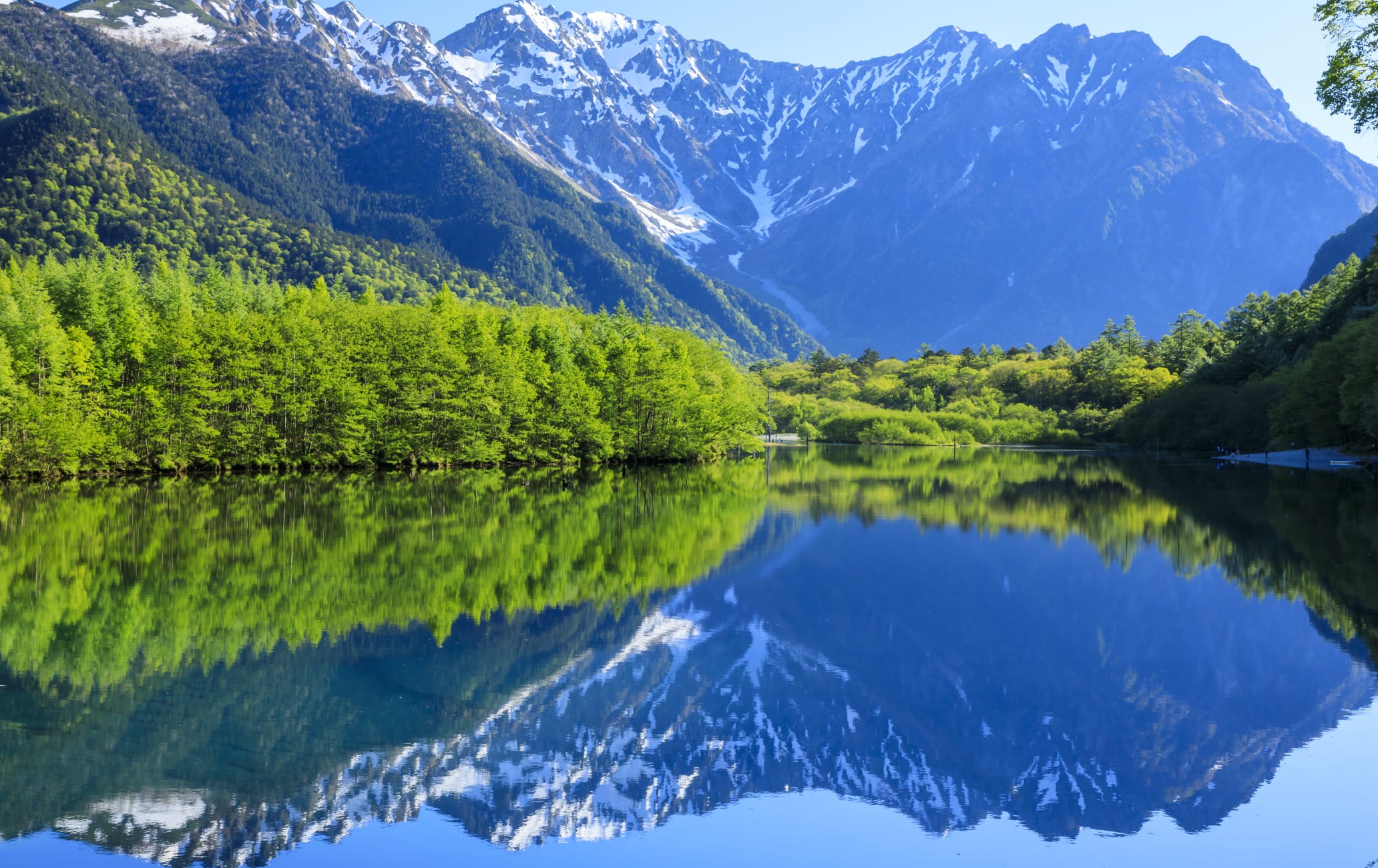The jewel of the Japan Alps
Kamikochi, a largely undeveloped resort in the Northern Japan Alps, is home to some of the country's most splendid mountain scenery. Whether for a leisurely walk along the Azusa River or an extended trek in the mountains, visiting Kamikochi is a must for any visit to Nagano Prefecture .
Don't Miss
- Experience the spectacular views of the Hotaka Range peaks from Kappabashi Bridge
- Take a hike out to Myojin Pond
- Go for a trekking adventure in the alpine wonderland of the Northern Japan Alps
How to Get There
Kamikochi is not the easiest place to access, so research accordingly before heading off.
If you want to travel by train, aim to get to Matsumoto Station and jump on a train to Shin-Shimashima. From there, you'll have to take a bus as private cars are banned from Kamikochi.
There are direct bus services that depart from Tokyo, Osaka, Kyoto, and Nagano.
Quick Facts
At 1,500 meters, Kamikochi and the surrounding peaks are all part of the Chubu Sangaku National Park
Kamikochi is accessible from mid-April until mid-November, but you can snowshoe during winter
Peak season
Kamikochi is popular throughout its open season but is especially busy during summer holidays from mid-July through to August and on weekends during the autumn foliage season.

Stand in awe amid the beauty of Kamikochi
While certain famous destinations can never live up to their hype, Kamikochi is rightfully renowned. The fifteen-kilometer (approx.) valley, with its lush forests, offers stunning views of the surrounding peaks, including the volcanic Mt. Yakedake. The Hotaka mountain range dominates the area, and at 3,190 meters, Mt. Oku Hotaka is the highest peak in the Northern Japan Alps.
An introduction to the area
The bus into Kamikochi arrives at a visitor's center not far from Kappabashi Bridge, a 36.6-meter wooden structure spanning the Azusa River. It's a major Kamikochi landmark, and one of its most popular spots for snapping photos.
While the valley as a whole is relatively undeveloped, the central area has some guest houses, hotels, and a smattering of shops and restaurants. This zone can get busy at times, but if you keep hiking along the river, you'll soon be away from the crowds.
Hike along the turquoise Azusa River
Casual day hikes from this area along the turquoise Azusa River can be supremely rewarding with tremendous views along the way. Myojin Pond and Taisho Pond are both popular sightseeing spots for their pristine waters which reflect the surrounding peaks. Keep your eyes peeled for the troops of monkeys that frequently come romping through.

Climb into the wild Northern Japan Alps
Heading towards Myojin Pond, hike further still and you'll soon begin the ascent into Japan's alpine realm. Along the way, the valley's forest foliage presents a mix of larch, birch, and hemlock. It's also home to such local wildlife like deer, the Japanese breed serow, raccoon dogs, foxes, plenty of monkeys, and the occasional bear.
An autumnal delight
The valley is at its most splendid in the fall. While legions of visitors descend on Kamikochi in October, if you keep walking up the river valley, you'll soon leave most of them behind. Another option is doing a day hike up nearby Mt. Yakedake; this path lets you take in the autumn hues minus the crowds.


Snowshoeing in winter
Snowshoeing into Kamikochi is an amazing way to experience the valley in the off-season. With the park officially closed during winter, this is a unique opportunity to experience Kamikochi without any vehicles or crowds. A winter hike from the tunnel at the entrance of the resort to Kappabashi Bridge takes about two and a half hours. You can rent snowshoes in Matsumoto.

























































